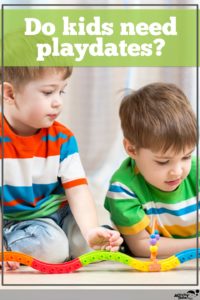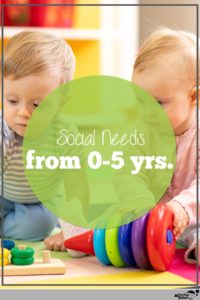
We’ve been “safe at home” for nearly two months now. The mandated time apart from friends, extended family, and social activities have been a gift to some and a nearly unbearable burden to others. Some of us will continue to shelter in place. Others are looking at loosening restrictions and wondering if it’s ok to venture out. But do our children really need playdates?
For those with little ones at home, there are concerns about Covid19 exposure, but also whether the lack of peer interaction is having a detrimental impact on development. Let’s explore.
People are social creatures. Numerous studies have shown that strong emotional bonds with others and within our communities has benefits to both our mental and physical health. When does this start?
How Social Should Children Be?
What infants need:
Babies need social interaction. They are hardwired to look at faces and communicate with cries, smiles, and babbling. Moms know that babies show preferences for “their people” and that touch and voice can soothe or excite. First games, like peek-a-boo, mimic the back-and-forth of conversation. Babies who don’t receive this early stimulation may demonstrate cognitive and developmental delays, but what babies need is a responsive caregiver, not other babies. Playdates for children under one year are much more about providing a place for parents to interact and support one another.
What toddlers need:
Our 1-2-year-old friends are busy! They are much more physically active, mastering walking skills, running, climbing, throwing, and “jumping.” They’re building and interacting with toys and their environment. At this stage, toddlers will demonstrate parallel play—playing near but not with others–when they are with peers. From 12-24 months, they will play alone, but how they play isn’t influenced by others. From 2-3 years, they continue to use parallel play, but may mimic what another child nearby is doing. In a group setting, we can begin to help them navigate skills such as empathy, sharing, and patience. However, we don’t have to be in a group of peers to practice. Siblings or adults are an excellent substitute. Encourage, but don’t force, children to take turns and be quick to give their special toy back. Use lots of empathetic language by narrating feelings in books or during the day (ex. “I can see you’re frustrated.” “It looks like you’re excited!”)
What preschoolers need:
As children enter this phase, we want them to communicate their feelings and wants/needs more consistently, demonstrate empathy and show more self-control. While this can be worked on in a peer group setting, peers aren’t necessary. Caregivers know that preschoolers have big feelings. Helping them manage these in a more constructive way than biting/hitting/tantrums is often easier when one playmate has more self-control. So, older siblings and adults are wonderful partners because they can both narrate and model appropriate behavior. Preschoolers with younger siblings have advantages too! A younger sibling offers an opportunity to learn perspective (“Baby sister isn’t ready to play with that. She could get hurt.”), empathy (“Oh, look! She’s sad she can’t have a turn yet.”) and patience (“I can read you the book after I put the baby to bed.”). These are exactly the social skills we hope to send our children off to school with!
If you’re ready and able to fill the calendar with playgroups because they support you, by all means do! Parenting is difficult work and social support systems are key. However, for children birth to 5 years, socialization comes down to interaction in a loving and responsive environment. Peers are optional.

Interested in learning more about how play develops? Check out my post on Stages of Play.





